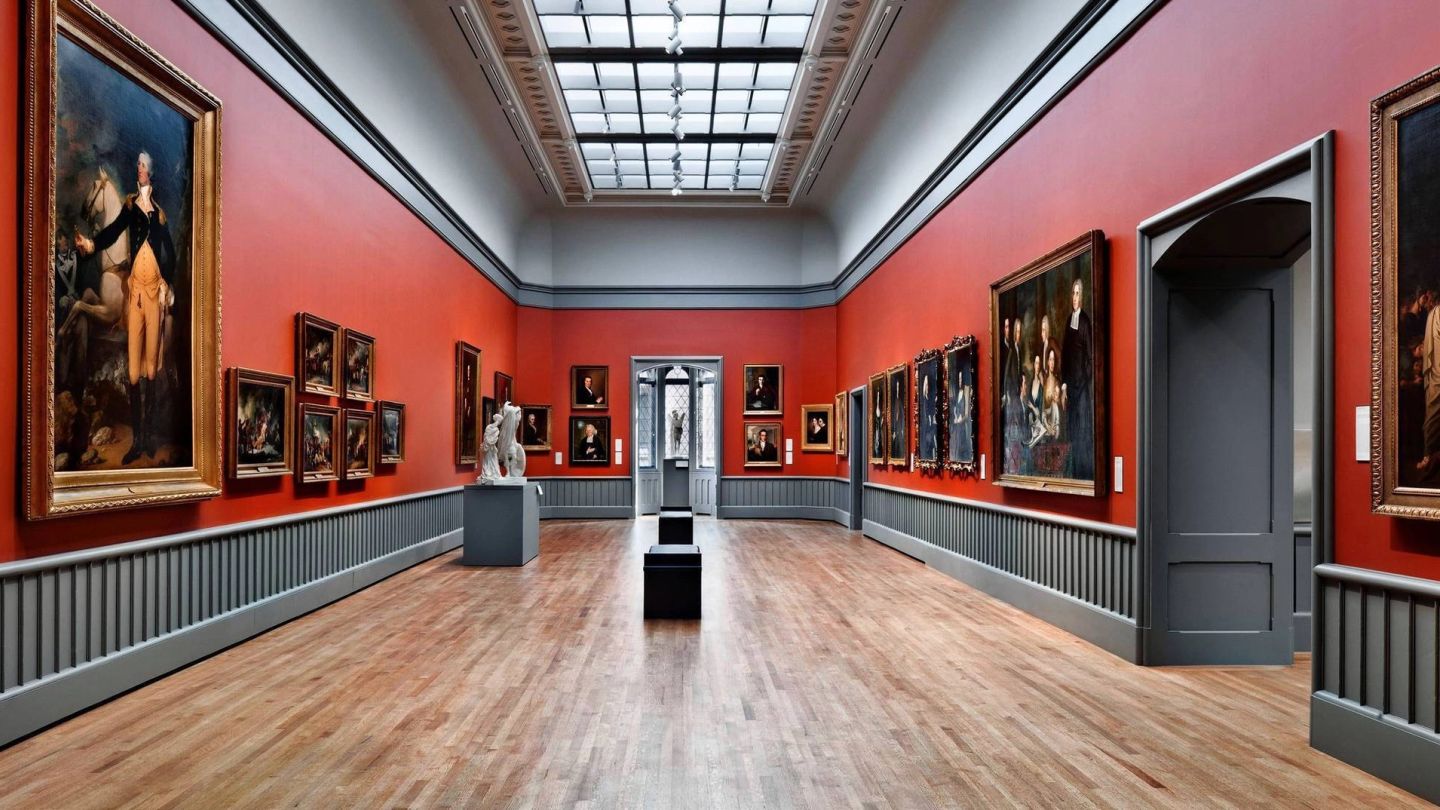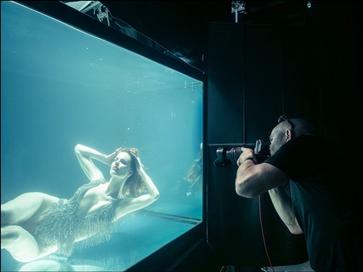

With the upper scehelons of the art market thriving, world record prices are regularly made and then broken again, and not just in the contemporary art market, but across virtually all top end sectors. But who are these people paying such stratospheric? (Francis Bacon’s Three Studies of Lucien Freud sold in 2014 for $142.4 million at Christie’s in New York).
The acquisition of expensive ne and decorative arts has historically been perceived as a luxury only afforded to aristocratic or Royal gures determined to maintain an af uent lifestyle and project a dual symbolism of re ned taste and supreme power.
However, this narrative has long been a fallacy, ever since the upwardly mobile Netherlandish merchants of the 17th century forced themselves into the fray. They used their new-found capital to purchased Frans Hals, Jan Steen, van Goyen and David Teniers, among others, in their droves, and the market has been in almost continual expansion ever since.
The list of present-day art collectors represents a cross- section of contemporary high society, from oil-rich Middle East Royalty to forward-looking multinational corporations. The Prince of Liechtenstein is the last bastion of European nobility and monarchy to play a serious active role in the market.
The presence of the son of a mechanic from Bristol, and an orphan from Lithuania – Damien Hirst and Roman Abramovich respectively – would seemingly attest to the evolution of society in the 20th and 21st centuries. However if we look to the past, the landscape is actually not so different. Artists, from Michelangelo to Rubens, acquired great wealth and fabulous art collections.
The proprietors of the world’s natural resources have been shocking onlookers for more than two centuries with ostentatious displays of wealth in up-market art dealerships and galleries. Where previously this was American industrialists or European diamond speculators, today it is the Russian oligarchy or members of a reigning Middle Eastern family.
The acquisition of art is a great symbol of success. As you do not need art to survive, and it is a pleasure of the mind rather than the body, spending your income on art is an announcement that you are both prosperous and sensitive to culture. It is a proclamation that you have interests beyond your own ego, even if this is often incongruous with reality.
The best know figure of the Russian oligarchy, Roman Abramovich became a public figure in the West due to his acquisition of Chelsea football club. From orphan beginnings in Lithuania, he rose in astonishing fashion and, by the age of 30, part-owned a controlling stake in the oil firm Sibneft (Gazprom Neft).
Abramovich personally recommended Vladimir Putin to the then Russian President Boris Yeltsin, and Putin reportedly now treats Abramovich like a favourite son. Together with his girlfriend Dasha Zhukova, Abramovich has emerged as a major buyer in the international art market. He buys Russian art, including the works of the conceptual artist Ilya Kabakov, but also follows the trend for paintings by Francis Bacon, Lucien Freud and other blue chip names. Zhukova’s involvement in the contemporary market (she is head of the Garage Centre for Contemporary Culture and a board member at LACMA) has evidently encouraged Ambramovich’s collecting habits.
Where Abramovich goes the rest of the Russian oligarchy invariably follows, and so long as Russia has a controlling stake in the oil and gas industries, it is likely we will continue to see the Russian oligarchy dominating the very top end of the art market.
A French billionaire and founder of The Kering Group (formerly PPR) of luxury goods companies, Pinault owns or has owned the likes of Gucci, Alexander McQueen, Château Latour and Converse shoes.
As the owner of Christie’s auction house, Pinault controls the world’s largest art business, and as such has an intimate inside knowledge of the art market. He has built up one of the world’s largest and most valuable new collections of art, and has bought a number of works by the next man on our list, artist Damien Hirst. Pinault’s great rival in business, Bernard Arnault, France’s richest man and chairman and chief executive of cer of LVMH luxury goods copany, is also a proli c collector of modern art.
In 1999 he bought Phillips de Pury auction house, in direct competition to Pinault’s Christie’s. That the two chief proprietors of luxury goods of the last 50 years have taken such an interest and stake in the art market shows how important art has become as a symbol of luxury and wealth.
As the leading gure of the YBA’s, and one of the best known living artists, Damien Hirst is a divisive gure. For some he is a symbol of the preoccupation in contemporary art to look to shock and awe rather than educate and beautify.
However, it is impossible not to admire Hirst’s uncanny mastery of the art market. He is an icon of his generation. In 2005 he purchased the enormous Gothic Revival country pile Toddington Manor, and painstakingly restored it to house and showcase his art collection. The collection has a British focus, but also includes works by Andy Warhol and Jeff Koons. Like in so much of his work, the underlying theme of the collection is death. Hirst does not compare to the others on this list in wealth.
However, we can often get an insight into the state of the art world and market by looking at which leading artists collect each other’s work. Hirst buys predominantly contemporary, impact pieces that have simple messages. His collecting habits are mirrored closely by the majority on this list, which helps explain the hegemony at the top of the market by a few brand name artists.
“As a human being, as you go through life, you just do collect. It was that sort of entropic collecting that I found myself interested in, just amassing stuff while you’re alive.” – Damien Hirst, 2006.
The company proclaims their collection has “5,000 works of art and is displayed in more than 180 buildings. The collection emphasises contemporary art from around the world, displayed for the bene t and enjoyment of Microsoft employees, their guests, and Microsoft customers”. Microsoft only spends a sliver of their $86 billion yearly turnover on their collection, but even a sliver of such a large pie is a serious outlay, particularly for a public company that has to answer to its shareholders.
The company employs a full time curator and collects mainly mid-level and emerging contemporary artists, but what is revealing is that they collect at all. Other corporations with a collecting habit include Deutsche Bank AG, who now own 50,000 works, including a Picasso and a Richter. Apart from enlivening the walls of of ce headquarters, why do these companies collect?
Art is seen in many quarters as an inherent good, and for multinational companies that want to be portrayed as progressive, investing in art is a good way to promote their image and increase ‘soft power’. As companies become more reliant on their public perception, and the idea of art as an investment vehicle grows traction, top international companies could soon become the major art market competitors of the future.
In 2007 the Louvre announced a major multi-billion dollar agreement between the French government and Abu Dhabi for the formation of a museum in the small gulf state, to be called Louvre Abu Dhabi. The driving force behind this controversial agreement was the Al Nahyan family who has ruled Abu Dhabi since 1793.
The family fortune is estimated at $23 billion, largely based on the fortunate geological landscape of a city with a population of 921,000. Abu Dhabi holds 9 per cent of the world’s proven oil reserves and almost 5 per cent of the world’s natural gas. The museum is still under construction and the family has collected with discretion, but they are looking to purchase masterpieces from antiquity to today, without discrimination. It has been announced that there is no censorship (nudity is acceptable), which the museum will shy away from, despite the museum’s location in a Muslim country.
There is a will to create a major international art collection within the brand of Louvre Abu Dhabi so as to transform Abu Dhabi into a tourist destination and give credence and prestige to the city state. The creation of such a dialogue between East and West using art must be construed as a positive development for international cooperation.
The Liechtenstein’s 300-year-old family collection is arguably the greatest private collection of European art in the world. In the tough economic climate after 1945, the collection was under threat, and dozens of masterpieces were sold off to cover nancial losses. The current Prince, Hans-Adam II, has managed to reverse this and actively expand the collection, as well as buy back much of what was previously lost or sold off.
The success of the family owned LGT banking group has been the catalyst for this. Without the need to build a collection from scratch, the Prince has practiced a studied acquisition policy, only pursuing the very nest old master paintings, sculptures and decorative arts on the market. Most of the collection is held in the Liechtenstein Museum in Vienna.
The museum is a great highlight of Western culture, packed floor to ceiling, room to room, with Renaissance, Baroque and Rococo masterpieces. Extraordinary Raphael and Rubens canvases jostle for space with Boulle cabinets and mesmerising Giambologna bronzes. Unfortunately this writer’s opinion is clearly a minority view, as the Liechtenstein Museum has been closed since 2012 due to poor visitor numbers.


